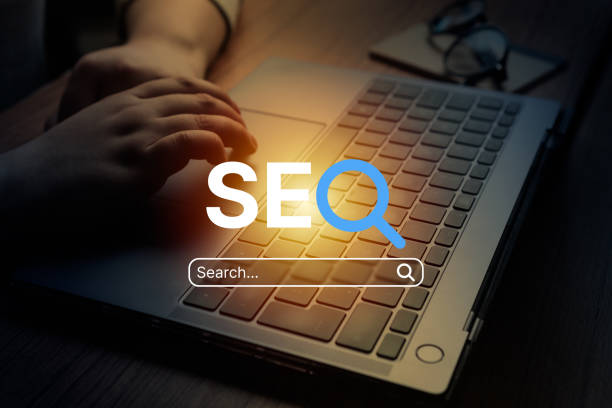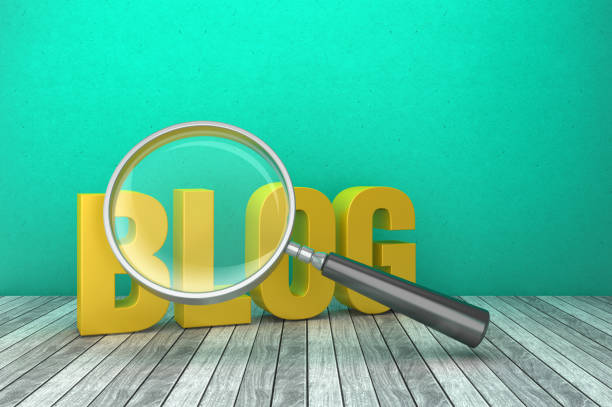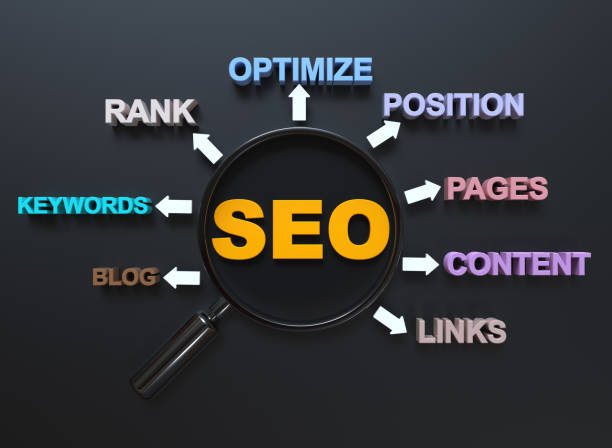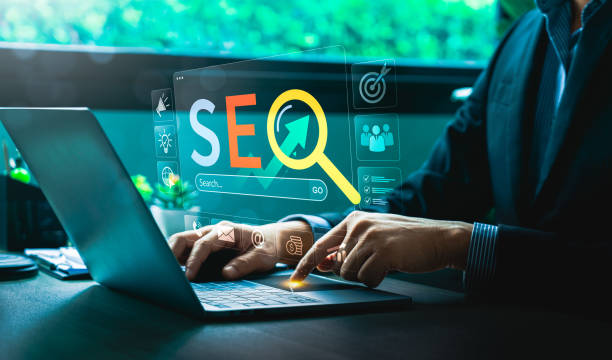What is On-Page SEO and Why Does it Matter?

What is On-Page SEO and Why Does it Matter?
#On-Page SEO refers to a set of techniques and actions you perform within your website to improve your site’s ranking in Google and other search engine results.
Unlike #Off-Page SEO, which focuses on activities like link building, On-Page SEO is completely under your control and includes optimizing content, site structure, HTML tags, and other internal elements.
SEO is vital for the success of a website because it helps search engines better understand your site’s content and show it to relevant users.
By implementing optimal On-Page SEO, you increase the chances of your website being seen, thereby attracting more organic traffic.
The importance of On-Page SEO lies in the fact that by improving user experience and providing valuable content, you can increase your conversion rate and ultimately your sales.
Search engines like Google give better rankings to websites with strong On-Page SEO because these websites typically provide more accurate, organized, and relevant information.
Optimizing On-Page SEO means providing the best answer to users’ questions, which leads to increased user satisfaction and improves your site’s ranking in search results.
Ultimately, investing in On-Page SEO is a long-term strategy that can help you establish your position in the competitive online market and achieve your business goals.
Using keywords, meta tags, and a proper URL structure correctly are all effective in improving On-Page SEO.
By improving the readability and accessibility of the website, On-Page SEO enhances the user experience, which helps increase the time users spend on the site and reduce the bounce rate.
Optimizing images using ALT tags and reducing their size are also important On-Page SEO techniques that can help improve site loading speed and increase user satisfaction.
Do you dream of a thriving online store but don’t know where to start?
Rasaweb is your comprehensive e-commerce website design solution.
✅ Attractive and user-friendly design
✅ Increased sales and revenue⚡ Get free consultation
Keyword Research: An Essential Step in On-Page SEO

Keyword Research: An Essential Step in On-Page SEO
#Keyword_Research is the first and most important step in any SEO strategy, especially On-Page SEO.
Choosing the right keywords helps you produce content that precisely addresses users’ needs and questions.
Using keyword research tools like Google Keyword Planner, Ahrefs, and SEMrush, you can find keywords related to your field of activity that have the highest search volume and lower competition.
After identifying the main keywords, you should use them naturally and strategically in your content.
This includes using keywords in titles, meta descriptions, main text, and ALT tags for images.
Keep in mind that overuse of keywords (Keyword Stuffing) can harm your site instead of improving its ranking.
The best practice is to use keywords naturally and in the form of smooth sentences relevant to the topic.
In addition to the main keywords, you should also look for long-tail keywords.
These keywords usually have a lower search volume but a higher conversion rate because users know exactly what they are looking for.
Keyword research is an ongoing process and you should regularly review and analyze new keywords and adjust your strategy based on changes in user search behavior.
By using website analysis tools like Google Analytics and Google Search Console, you can track the performance of your keywords and understand which keywords generate the most traffic and conversions for you.
Optimizing content based on this data can help you get better results from your On-Page SEO efforts.
Ultimately, keyword research not only helps improve your site’s ranking but also helps you better understand your audience and their needs, which can lead to improving the overall quality of your content and user experience on your site.
On-Page SEO is a complex process that requires attention to detail, but with proper keyword research, you can create a strong foundation for your site’s success.
On-Page SEO helps you get seen.
Content Optimization for Search Engines and Users

Content Optimization for Search Engines and Users
Content is king! This sentence is a fundamental principle in the world of SEO.
Producing high-quality, valuable, and relevant content to users’ needs is the most important factor in the success of On-Page SEO.
Your content should provide accurate and comprehensive information and fully answer users’ questions.
In addition, your content should be engaging and readable to encourage users to spend more time on your site.
To optimize content for search engines, you should use keywords naturally and strategically.
Create attractive and relevant titles and use Heading tags (H1, H2, H3, etc.) to organize content.
Use high-quality images and videos and describe them with appropriate ALT tags.
Update your content regularly and add new and relevant information to it.
Content optimization is not just about using keywords, but about providing an excellent user experience.
Your content should be easy to read and understand, and users should be able to quickly access the information they need.
Use short and simple sentences and divide paragraphs regularly.
Use lists and bullets to present information in an organized manner.
Content optimization is an ongoing process and you should regularly review the performance of your content and make the necessary changes based on the data.
By using website analysis tools, you can find out which pages have the most traffic and which pages need improvement.
Content optimization helps you improve your site’s ranking in search results, attract more traffic, and convert users into customers.
On-Page SEO greatly helps this process.
| Factor | Description |
|---|---|
| Page Title | The page title should be attractive, relevant, and include the main keyword. |
| Meta Description | The meta description should be a summary of the page content and encourage users to click. |
| Heading Tags | Heading tags (H1, H2, H3, etc.) are used to organize content and highlight important points. |
Optimizing URL Structure for SEO

Optimizing URL Structure for SEO
The URL structure of your website plays an important role in SEO and user experience.
Short, descriptive URLs containing keywords help search engines better understand the content of the page and help users easily find the page they are looking for.
The best practice is to use static and readable URLs and avoid using complex and unnecessary parameters.
Your URLs should reflect the hierarchical structure of your site and show users where the page is located on the site.
For example, if you have a page about “SEO Training,” its URL could be “/blog/seo-training”.
Using hyphens (-) instead of underscores (_) to separate words in the URL is recommended.
Also, it is best to write your URLs in lowercase to avoid potential problems.
Optimizing the URL structure is an essential component of On-Page SEO and can help improve your site’s ranking in search results.
In addition, proper URLs help improve user experience and encourage users to stay on your site longer.
Always carefully review the URL of a new page before publishing it and make sure it is compatible with SEO principles.
Changing the URLs of pages after publication can harm your site’s ranking, so it’s best to choose optimal URLs from the start.
On-Page SEO requires attention to all these details to achieve the best result.
Research shows that 80% of customers trust companies with professional websites more. Does your current website inspire this trust?
With Rasaweb’s corporate website design services, solve the problem of customer distrust and poor online image forever!
✅ Create a professional image and increase customer trust
✅ Attract more sales leads and grow your business
⚡ Get free consultation
The Importance of Title Tags in On-Page SEO

The Importance of Title Tags in On-Page SEO
Title Tags are one of the most important HTML elements in On-Page SEO.
The title tag displays the title of your page in search results and plays an important role in attracting users and encouraging them to click.
Title tags should be attractive, relevant to the topic of the page, and include the main keyword.
The length of the title tag should be between 50 and 60 characters to be fully displayed in search results.
Each page of your site should have a unique title tag and avoid using duplicate titles.
Title tags are important not only for search engines but also for users.
A good title tag can help users quickly understand what your page is about and whether it answers their questions.
When writing title tags, keep in mind that your title should accurately describe the content of the page and avoid providing false or misleading information.
Using keywords in the title tag can help improve your site’s ranking in search results, but it should not come at the cost of reducing the quality and readability of the title.
The best practice is to use keywords naturally and in the form of a smooth sentence relevant to the topic.
Optimizing title tags is an ongoing process and you should regularly review their performance and make the necessary changes based on the data.
By using website analysis tools, you can find out which title tags have the most clicks and which tags need improvement.
On-Page SEO gets a good ranking by doing these optimizations.
Meta Description Optimization

Meta Description Optimization
Meta Descriptions are summaries of your page content that are displayed below the page title in search results.
Meta descriptions do not directly affect your site’s ranking, but they play an important role in attracting users and encouraging them to click.
A good meta description should be attractive, relevant to the topic of the page, and include a Call to Action.
The length of the meta description should be between 150 and 160 characters to be fully displayed in search results.
Each page of your site should have a unique meta description and avoid using duplicate descriptions.
Meta descriptions should accurately describe the content of the page and tell users what they will find if they click on the link.
Using keywords in meta descriptions can help improve the Click-Through Rate, but it should not come at the cost of reducing the quality and readability of the description.
The best practice is to use keywords naturally and in the form of a smooth sentence relevant to the topic.
Optimizing meta descriptions is an ongoing process and you should regularly review their performance and make the necessary changes based on the data.
By using website analysis tools, you can find out which meta descriptions have the most clicks and which descriptions need improvement.
Optimizing meta descriptions is an important aspect of On-Page SEO.
Image Optimization for On-Page SEO
![]()
Image Optimization for On-Page SEO
Images play an important role in the attractiveness and user experience of your website.
Optimizing images for On-Page SEO can help improve your site’s ranking in search results and increase organic traffic.
The first step in image optimization is to choose a suitable file name.
The image file name should be descriptive and include the keyword related to the image.
For example, if you have an image of a “SEO Training Book,” its file name could be “seo-training-book.jpg”.
The next step is to use ALT tags.
The ALT tag is an alternative text for the image that is displayed if the image does not load.
The ALT tag should accurately describe the image and include the keyword related to the image.
In addition, you should minimize the size of your images to increase your site’s loading speed.
Use image compression tools such as TinyPNG and ImageOptim to reduce image size.
The image format is also important.
Use the PNG format for graphic images and the JPEG format for photographic images.
High-quality, low-size images are the best option for SEO.
You can also use Schema Markup features to provide more information about your images to search engines.
Image optimization is an essential component of On-Page SEO and can help improve user experience and your site’s ranking in search results.
Always carefully review images before uploading them and make sure they are compatible with SEO principles.
On-Page SEO and its optimization is very important.
| Image Feature | Description |
|---|---|
| File Name | The file name should be descriptive and include the related keyword. |
| ALT Tag | The ALT tag should accurately describe the image and include the related keyword. |
| Image Size | The image size should be minimized to increase the site loading speed. |
| Image Format | Use PNG format for graphic images and JPEG format for photographic images. |
The Importance of Internal Linking in On-Page SEO

The Importance of Internal Linking in On-Page SEO
#Internal_Linking means creating links between different pages of your website.
Internal linking helps search engines better understand your site structure and helps users easily navigate your site.
Internal linking helps improve your site’s ranking in search results and increases organic traffic.
When internal linking, you should use appropriate Anchor Text.
Anchor text is the text that links to another page.
Anchor text should be descriptive and relevant to the content of the linked page.
Avoid using general anchor texts such as “click here”.
The number of internal links on each page should be balanced.
Too many links can confuse users, and too few links cannot help search engines understand your site structure.
The best practice is to give more links to pages that are more important.
Internal linking should be done strategically and based on the needs of users.
Links that point to related and useful pages are more valuable.
Internal linking is an essential component of On-Page SEO and can help improve user experience and your site’s ranking in search results.
By creating a strong internal linking strategy, you can help users and search engines easily find the content they need, and this can lead to increased traffic and sales for you.
Take On-Page SEO optimization seriously.
Are you annoyed by losing customers due to the old look or slow speed of your online store? The specialized Rasaweb team solves these problems with professional e-commerce website design!
✅ Increase customer trust and your brand reputation
✅ Incredible speed and excellent user experience
Get a free consultation with Rasaweb right now ⚡
Website Loading Speed Optimization

Website Loading Speed Optimization
Website loading speed is one of the important factors in SEO and user experience.
Users expect your website pages to load quickly, and if your website loading speed is slow, users may leave your site and visit a competitor’s site.
Google also considers website loading speed as a ranking factor, and sites with high loading speeds get a better ranking in search results.
To optimize website loading speed, you can use various techniques.
Image optimization, reducing the size of CSS and JavaScript files, using CDN (Content Delivery Network), enabling Gzip compression, and using Cache are among the important techniques in website loading speed optimization.
Also, you should use a high-quality Hosting that has high speed and stability.
By using website speed test tools such as Google PageSpeed Insights and GTmetrix, you can check your website loading speed and identify potential problems.
Website loading speed optimization is an ongoing process and you should regularly check your site speed and make the necessary changes.
By optimizing website loading speed, you can improve user experience, reduce the Bounce Rate, and improve your site’s ranking in search results.
#On-Page SEO and #Off-Page SEO both help improve your position in search results.
On-Page SEO Analysis and Continuous Improvement

On-Page SEO Analysis and Continuous Improvement
On-Page SEO is an ongoing process and requires analysis and continuous improvement.
After performing the initial On-Page SEO actions, you should regularly review your site’s performance and make the necessary changes based on the data.
By using website analysis tools such as Google Analytics and Google Search Console, you can track your site’s traffic, identify the keywords that generate the most traffic, and find pages that need improvement.
Also, you should regularly track changes in search engine algorithms and adjust your On-Page SEO strategy based on these changes.
SEO is a dynamic science and is always changing.
To succeed in SEO, you should always be up-to-date and use the latest techniques and methods.
On-Page SEO analysis and continuous improvement helps you maintain your site’s ranking in search results, attract more traffic, and convert users into customers.
By doing these things and following the #SEO On-Page tips, you can reach a good position in the search results and attract more audiences.
Also, keep in mind that SEO is a long-term investment and its results appear gradually.
With patience and perseverance, you can achieve your SEO goals.
Frequently Asked Questions
| Row | Question | Answer |
|---|---|---|
| 1 | What is On-Page SEO? | On-Page SEO refers to the set of actions that are performed inside a website (on its pages) to improve the site’s ranking in search engine results. This includes content optimization, site structure, and HTML codes. |
| 2 | Why is On-Page SEO important? | On-Page SEO helps search engines better understand the content of a page and determine whether that page is relevant and valuable for users’ searches. This better understanding leads to higher rankings. |
| 3 | What is the first and most important step in On-Page SEO? | Keyword Research is the most important initial step. By finding the right keywords, you can produce targeted content relevant to users’ needs. |
| 4 | What is the role of the Title Tag in On-Page SEO? | The title tag is one of the most important ranking factors and should include the main keyword. This tag is displayed in search results as the page title and affects the click-through rate (CTR). |
| 5 | What is the importance of Meta Description? | The meta description does not directly affect the ranking, but by providing an attractive summary of the page content in search results, it can encourage users to click and, as a result, increase the click-through rate (CTR). |
| 6 | Why is it important to use Headings (H1, H2, etc.) in content? | Headings help structure content and improve readability for users and search engine crawlers. Using keywords in headings also helps the search engine better understand the topic. |
| 7 | What does Image Optimization in On-Page SEO include? | Includes compressing images to reduce size, using descriptive and relevant file names, and filling the Alt tag (alternative text) with related keywords to help search engines understand the content of the image. |
| 8 | What is meant by Internal Linking in On-Page SEO? | Internal linking refers to creating links between different pages of a website. This helps distribute page authority (Link Equity), improve user experience, and help search engine crawlers discover new pages. |
| 9 | Why is Page Speed important for On-Page SEO? | Page loading speed is a direct ranking factor and greatly affects user experience. Slow pages can lead to increased bounce rates and reduced user engagement. |
| 10 | What role does quality content play in On-Page SEO? | High-quality content that is comprehensive, unique, and valuable to the user is the core of On-Page SEO. This content not only attracts and retains users but also sends positive signals to search engines and helps to improve ranking. |
And other services of Rasa Web Advertising Agency in the field of advertising
Smart Google Ads: A new service to increase click-through rate through intelligent data analysis.
Intelligent Sales Automation: A combination of creativity and technology for user interaction by optimizing key pages.
Intelligent Website Development: A professional solution to attract customers by focusing on the use of real data.
Intelligent Advertising Campaign: A new service to increase digital branding through the optimization of key pages.
Smart SEO: Designed for businesses that are looking to increase sales through Google Ads management.
And more than hundreds of other services in the field of internet advertising, advertising consulting and organizational solutions
Internet Advertising | Advertising Strategy | Advertorial Reports
Resources
What is On-Page Optimization?
,The Complete Guide to On-Page Optimization
,On-Page SEO: An Actionable Guide
,On-Page Optimization: A Step-by-Step Guide
? In Rasaweb Advertising Digital Marketing Agency, your digital dreams come true with our expertise. From professional SEO optimization to secure website design and creative advertising campaigns, we are your partner in the digital world.
📍 Tehran, Mirdamad Street, next to the Central Bank, Southern Kazerun Alley, Ramin Alley No. 6



